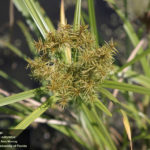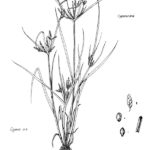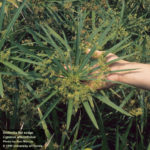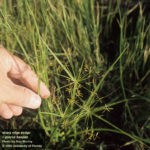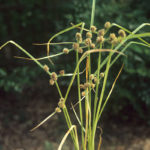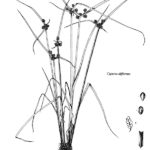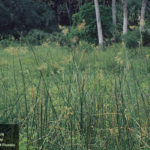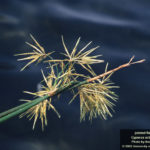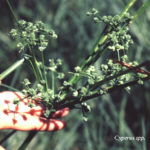Cyperus spp.
Illustration courtesy of University of Florida/IFAS Center for Aquatic and Invasive Plants. Used with permission.
What is Flat Sedge?
Physical Characteristics
Leaves:
- Number of leaves vary
Flowers:
- Grow in dense mass
- Many spikelets growing in rows
Fruit:
- Dry
- Does not open to release seed when ripe
- Could be round & bulging on both sides
- Could be 3-angled
- Typically brown in color
Stem:
- Hollow stems
- 3-angled
Where Does it Grow?
USDA, NRCS. The PLANTS Database (http://plants.usda.gov). National Plant Data Team, Greensboro, NC 27401-4901 USA.
Flat sedge can be found in moist places rooted in mud.
Pros and Cons of Flat Sedge
Submerged portions of all aquatic plants provide habitats for many micro and macro invertebrates. These invertebrates in turn are used as food by fish and other wildlife species (e.g. amphibians, reptiles, ducks, etc.). After aquatic plants die, their decomposition by bacteria and fungi provides food (called “detritus”) for many aquatic invertebrates.
What Type of Flat Sedge Do I Have?
There are many types of flat sedge, and they are difficult to identify without using detailed botanical keys. In Texas, there are 61 common species of flat sedge, 8 of which are listed below. Click on the buttons to learn more about each individual species.

